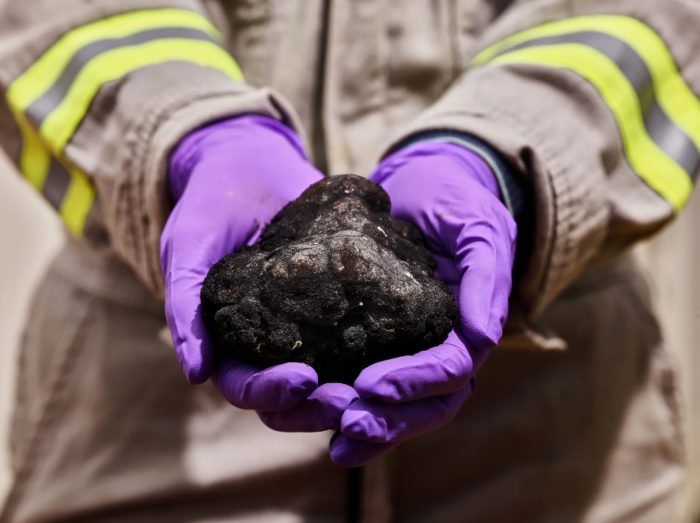Jun 23 2022
Mining the Sea
 One of the recurring patterns of our technological history is that any new massive industry uses resources. Eventually those resources become scarce, brining warnings that we are approaching “peak whatever” – the point at which we can no longer increase the availability of that resource, supplies dwindle, but our technology infrastructure is already dependent on it. Obviously resources are finite, and eventually any finite resource will run out, but so far we always seem to find a way around the “peak resource” catastrophe. But also, we may not always like the trade-offs.
One of the recurring patterns of our technological history is that any new massive industry uses resources. Eventually those resources become scarce, brining warnings that we are approaching “peak whatever” – the point at which we can no longer increase the availability of that resource, supplies dwindle, but our technology infrastructure is already dependent on it. Obviously resources are finite, and eventually any finite resource will run out, but so far we always seem to find a way around the “peak resource” catastrophe. But also, we may not always like the trade-offs.
From 1500-1660, for example, England was running out of timber for their vast navy and as their basic fuel for heating. As a result they turned to another resource, coal. But burning coal for fuel filled their cities with dense harmful smoke, making them almost unlivable. As a side effect, however, it also spawned the industrial revolution, so there’s that.
A couple of decades ago there were dire warnings that we were reaching peak oil. But since then there have been discoveries of vast new oil fields, and fracking has lead to a natural gas revolution. Now the problem is that we have too much fossil fuel, and if we burn it all we’ll warm the planet to an unacceptable degree. As we shift to a green economy, including trying to swap out our automobile fleet with all electric versions, we are facing another “peak” problem – the metals used in making all those batteries (lithium cobalt, nickel, rare earths). To some extent demand creates supply, even for a natural resource. Demand increases the value of the resource, which means it becomes worth it to obtain the resource from increasingly expensive sources. Also, technology is advancing in the background, and this makes new sources available to us.
Where, then, is the next source of the metals we need for batteries and a green energy society going to come from? Possibly from the sea. There are two sea-based mining opportunities, from the sea floor and from sea water itself. Seawater mining is currently being investigated, with technologies that will absorb the tiny amounts of specific elements from the water and concentrate them. The two elements that are the focus of this research are lithium and uranium. There is an estimated 4 billion tons of uranium in seawater. This is about 500 times the known land-based reserves, making those reserves an almost insignificant portion of total uranium near the surface of the Earth. Researchers have already succeeded in making yellow cake, a powdered form of uranium, from seawater. The trick, of course, is to do this on an industrial scale.
The situation is similar with lithium – the sea contains an estimated 180 billion tons of lithium. Right now industry uses about 160,000 tons per year. That is more than a million years of lithium at current usage. This is practically an inexhaustible supply. Developing the technology to safely and efficiently extract lithium from the sea at industrial scale is a critical technology, worthy of significant research. There are about 40 usable minerals in seawater, including cobalt, which is also critical for batteries.
The sea floor is another source of usable minerals. The Pacific ocean, for example contains trillions of black lumps called polymetallic nodules. They have been forming over millions of years as minerals fuse with shark teeth and other sea animal bones. These nodules contain rare earth elements. Between Hawaii and Mexico there is a location known as the Clarion-Clipperton Zone (CCZ), which contains enough nickel and cobalt in polymetallic nodule to create enough batteries for 4.8 billion electric vehicles. On the optimistic side mining these nuggets has been likened to vacuuming up golf balls from the bottom of a lake.
However, there is a potential dark side to mining the ocean floor (you had to see that coming). Environmentalists warn that these nodules are not lifeless, but rather have their own ecosystems of microscopic and tiny sea creatures. A massive sea floor mining operation would therefore be disruptive to the ocean’s ecosystem with unforeseen consequences. Fair enough – if we are going to embark on a massive new industry, we should absolutely study the environmental effects of that industry. I suspect there is a compromise where mining can be done but with safety measures to minimize any environmental impact. It’s worth studying, because the potential benefits are huge, including benefits to the environment itself but giving a huge boost to the green economy.
At the very least, it’s good to have options. I am not worried about all the warnings about peak rare-earths, or peak lithium – it’s there. We just need to develop the technology to safely extract it at scale. One resource that has proven to be not finite is human ingenuity.






